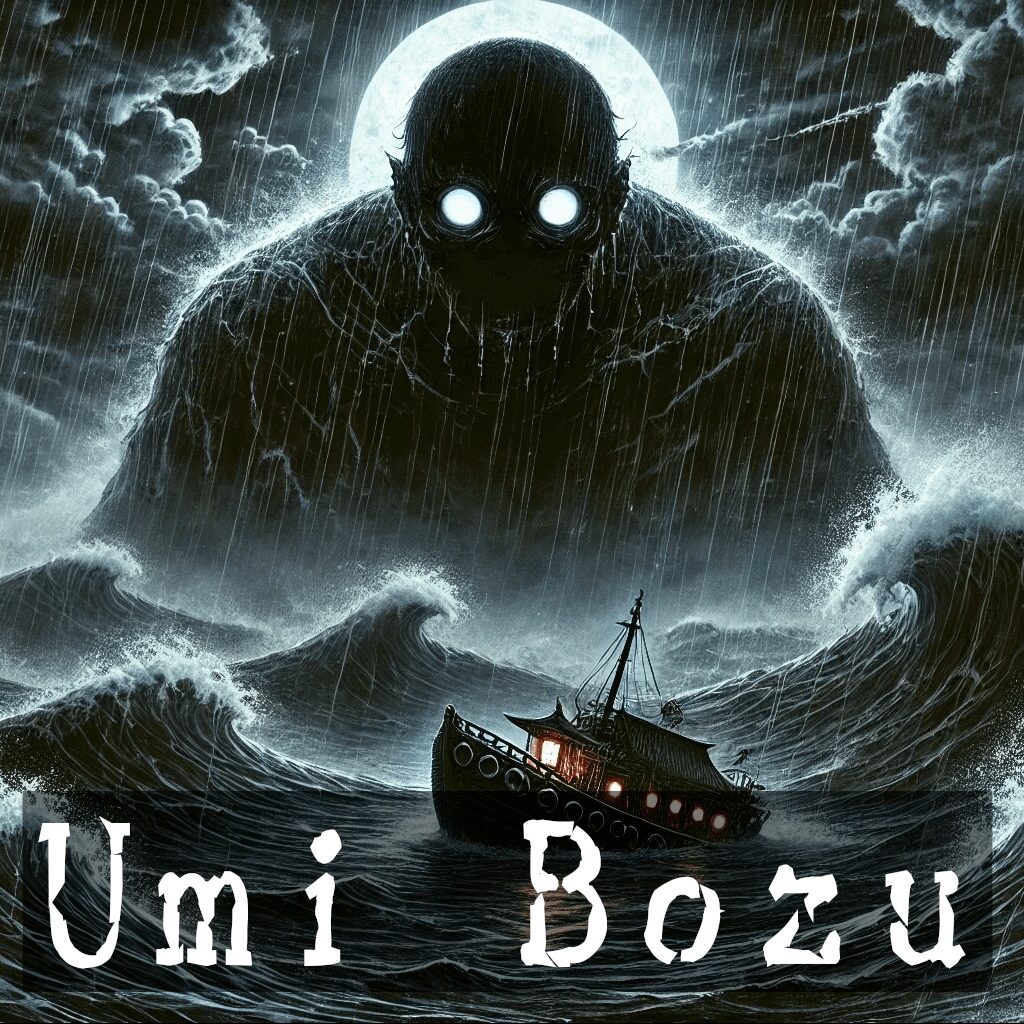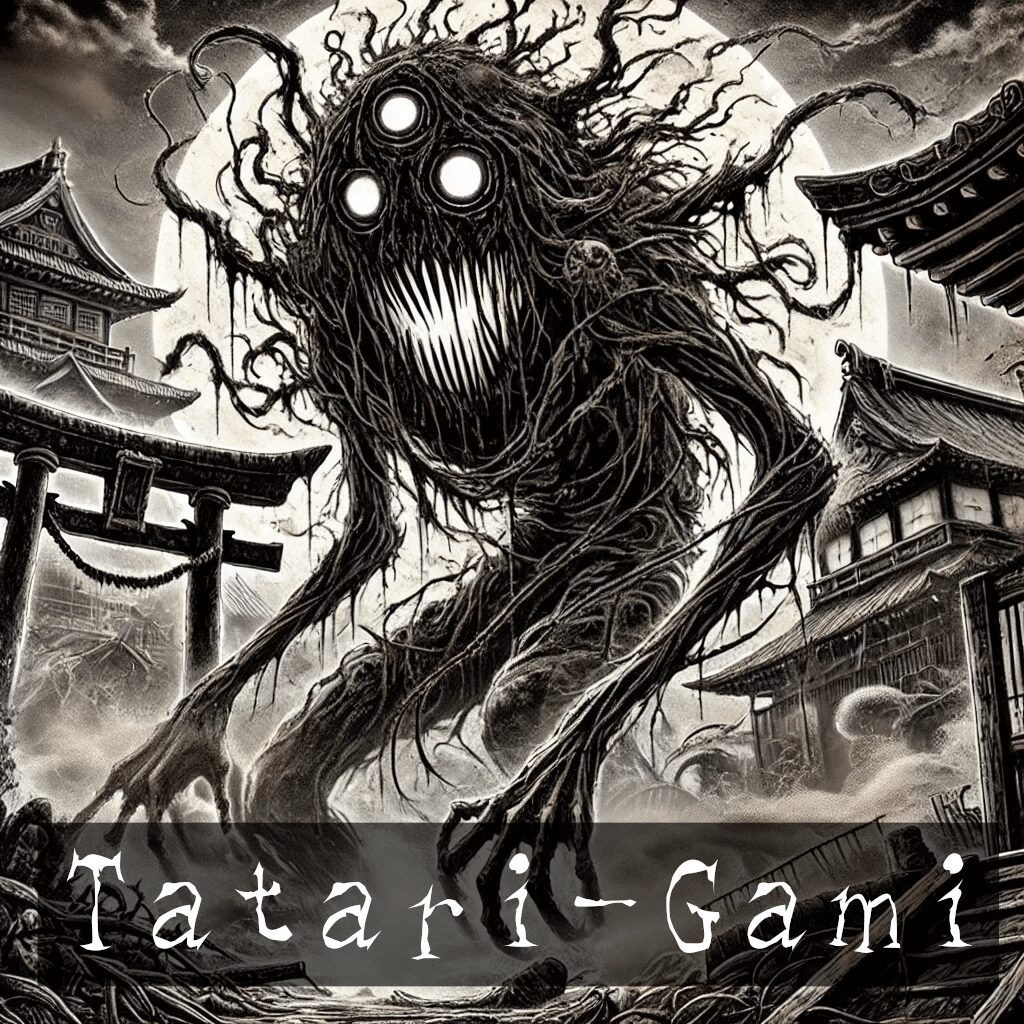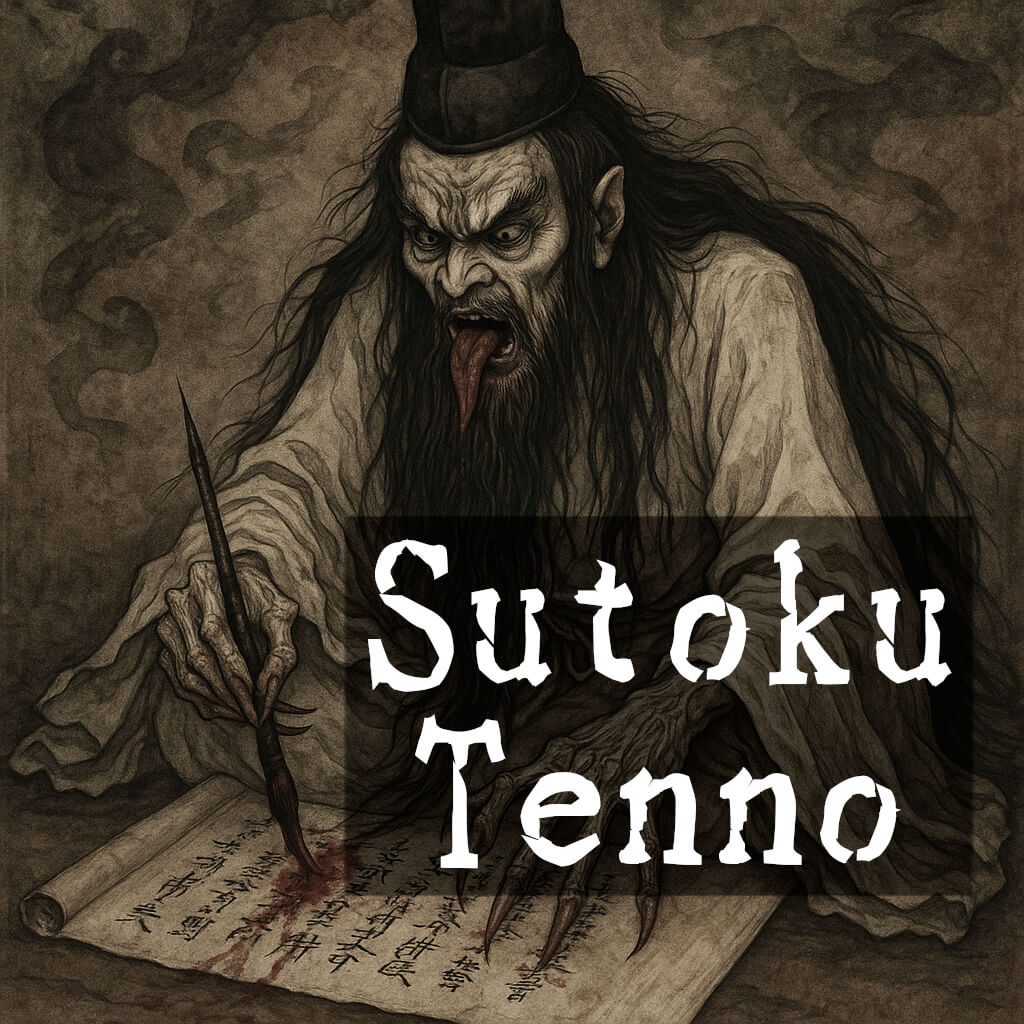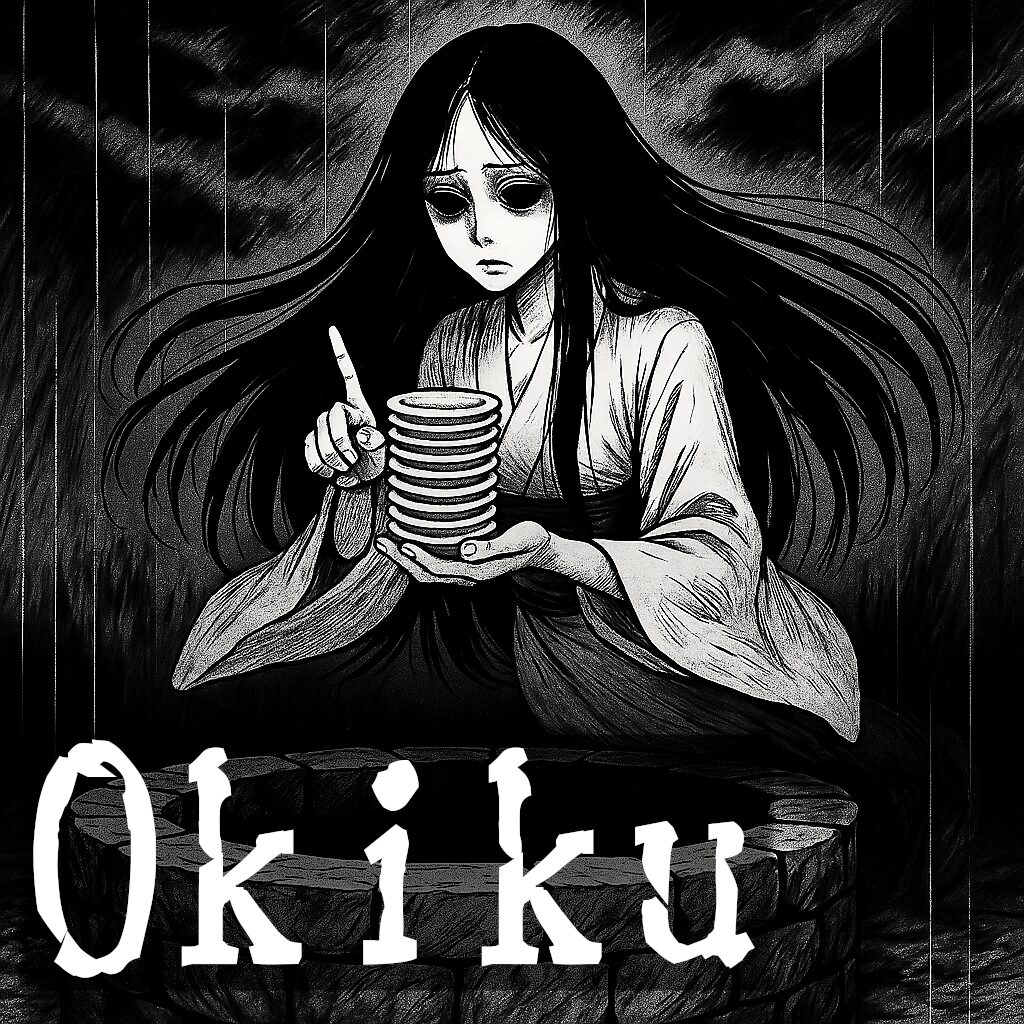Umi Bozu… At night, the previously calm surface of the sea suddenly rises, and a black giant monk-like figure appears….
Found in folklore across Japan, what exactly is this enigmatic being? In this article, we will delve deep into the mystery of this sea-dwelling Yokai
What is Umi Bozu?
Japan is home to numerous yokai legends, and among those linked to the sea, Umi Bozu (海坊主) stands out. It is said to appear suddenly at night, attacking boats and sometimes even capsizing them.
Its name contains two words in Japanese. Umi (海) means the sea, and Bozu (坊主) means monk. This name must have come from the appearance of it, which can be assumed from the numerous sightings with it having no hair and looking like a monk.
For this reason, it has other names such as Umi Nyudo (海入道) or Umi Hoshi (海法師), and both of these words refer to people who have taken in Buddhism.
Umi Bozu Yokai Story (podcast)
<–coming soon!–>
Characteristics of Umi Bozu
Characteristics of Umi Bozu vary depending on the region and each sighting, but it is commonly described as follows.
Appearance
- A massive human-like figure with a bald, monk-like head
- A dark, shadowy form that appears ominous
- Large, glowing eyes
- Often lacking visible limbs, emerging abruptly from the sea
Behaviour
- Most frequently appears at night or before a storm
- Attacks boats and attempts to capsize them
- Occasionally speaks to sailors, and if not answered correctly, becomes enraged
- Can sometimes be repelled with offerings or specific rituals
Regional Legends of Umi Bozu
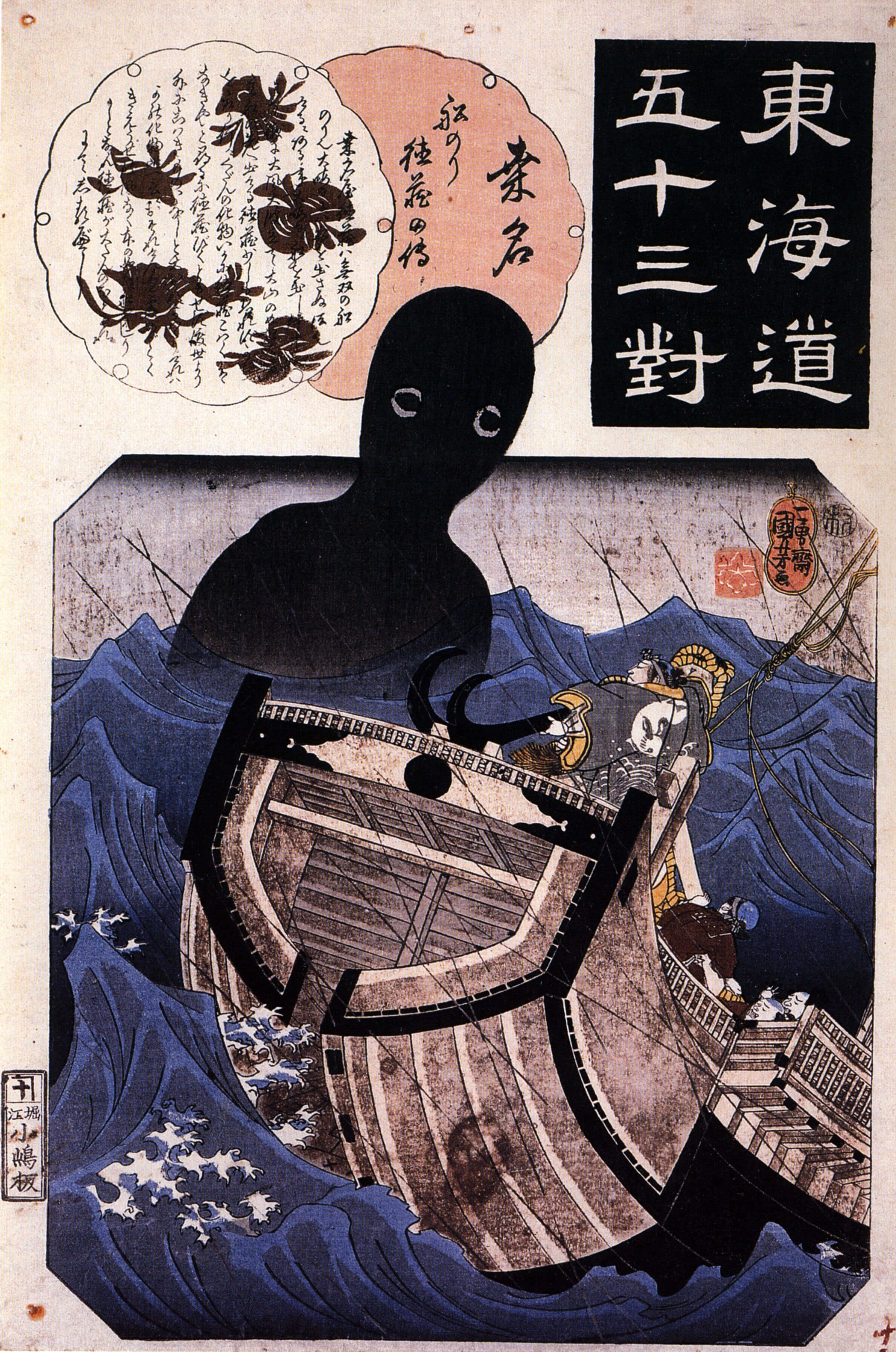
Its legend exists throughout Japan with unique regional variations. I will share some of the most famous ones here.
Umi Bozu in Tottori
There was an ancient book called “Inaba Kaidan Compilations (因幡怪談集)” that includes a story about this Yokai around the Tottori Area.
In a neighbouring village, there was a man who was undefeated in sumo wrestling. One night, while walking along the seaside in Yonago (米子), Tottori, a glowing monster approached him on the waves. The man catches the monster and throws it away, but struggles because it is slimy and elusive and leans on him repeatedly. He finally defeated the monster, tied it to a persimmon tree in his garden and went to sleep.
The next morning, the neighbours gather and are surprised to see that the man’s body has turned black. As the villagers counciled, a 90-year-old man said, “This monster must be Umi Bozu”.
Umi Bozu in Ehime
When you research the regional legends of Umi Bozu, you will notice there are historically more sightings in Ehime Prefecture.
In some of these traditions, Ehime Umi Bozu are said to have been red-bodied with arms and legs, as well as a tail of 2~30 cm. What’s more interesting is that some people are said to have wrestled with it, and there was also a legend that those who saw it would live a long life.
What could be the Origins of Umi Bozu?
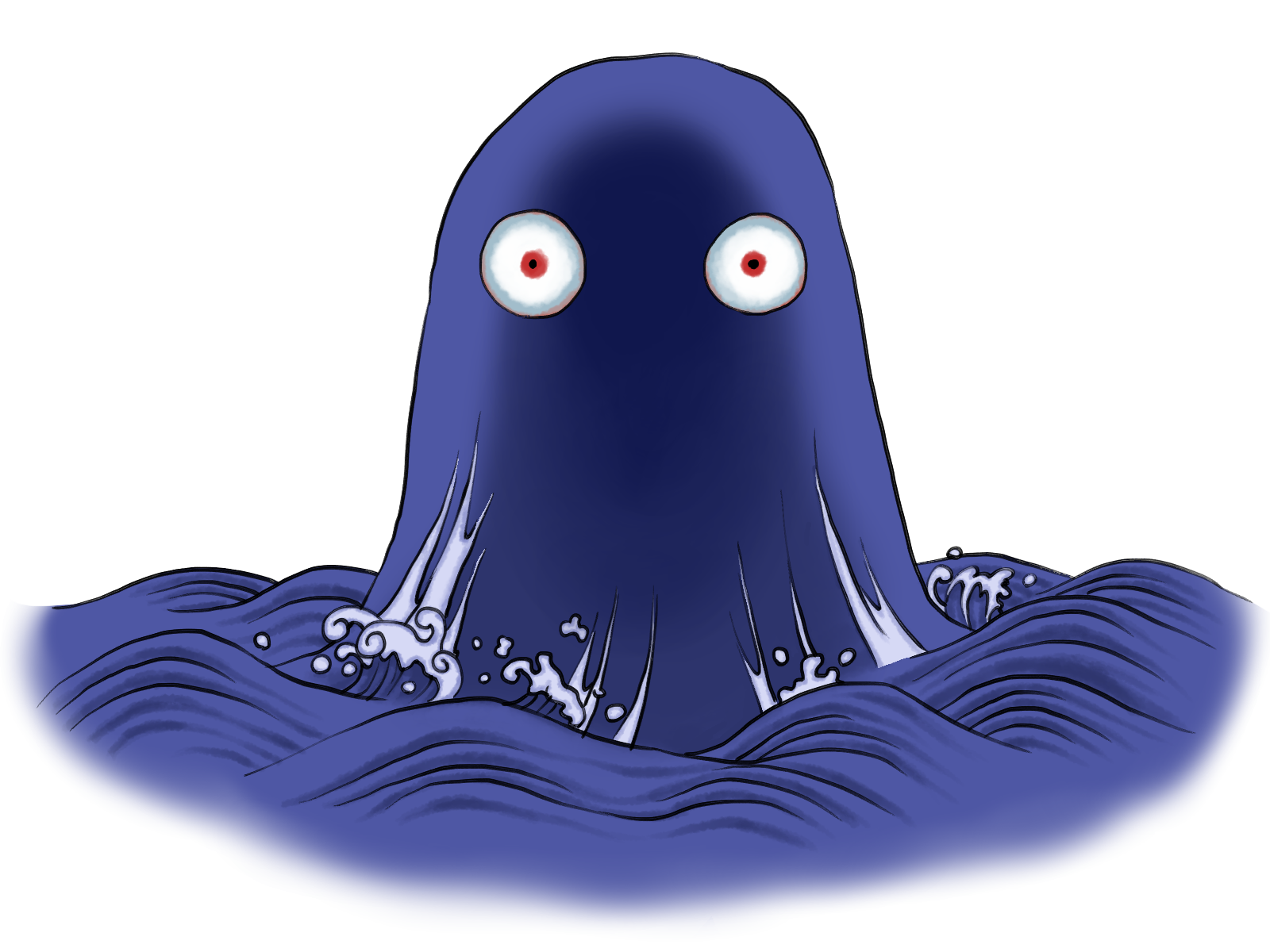
Is it merely a mythical yokai, or could it have a basis in reality? Several theories have been proposed.
Theory 1: Yokai Interpretation
This might be the most classic one. In Japan, there has been a custom to relate strange/supernatural phenomena to Yokai. Here are some examples.
- Umi Bozu represents the wrath of sea deities and differs from the Funa-yūrei (船幽霊 / ghosts of drowned sailors)
- A manifestation of sailors’ fears, given form as a yokai
- A legend created to enforce maritime safety rules and traditions
Theory 2: Connection to Natural Phenomena
This theory is more like an approach to explain the Umi Bozu incidents as natural phenomena. Such as…
- Mirage Theory: Distant islands or ships appearing distorted due to optical illusions
- Shadow of Waves and Sea Fog: Giant waves or mist resembling a looming figure
- Deep-Sea Creature Theory: Giant squid or whales mistaken for supernatural beings
Theory 3: Link to Folk Beliefs
In Japan, there is a concept called Yaorozu no Kami (八百万の神), which can be translated as “Eight Million Gods”. That means gods reside everywhere, including the Japan sea.
- A warning sign that conditions are unsafe for sailing or fishing
- Related to maritime prayers for safety
- Possibly an amalgamation of sea deity myths and local folklore
Umi Bozu’s Appearance in literature and media
This yokai has been featured in literature and modern media over the centuries:
- Edo-period ghost story collections (e.g., 百物語 / Hyaku Monogatari)
- Folklore studies by scholars such as Yanagita Kunio (柳田國男)
- Appearances in anime, films, and games. GeGeGe no Kitarō (ゲゲゲの鬼太郎) by Shigeru Mizuki (水木しげる), or Yokai Watch (妖怪ウォッチ)
Is Umi Bozu just a supersutition? or…
Umi Bozu is a haunting representation of Japan’s relationship with the sea. Its legend may serve as both a warning against maritime dangers and a reflection of ancient sailors’ superstitions.
Even nowadays, it remains a prominent figure in yokai culture, continuing to captivate audiences through folklore and modern media, which is quite fascinating…
Find Your Kaidan!
Discover your favourite Japanese scary/horror stories
Categories
Let’s talk
Would you like to analyse the story, make theories on it, and share your thoughts?
Please join our Discord channel
where you can share your thoughts and interact with other Kaidan lovers!
